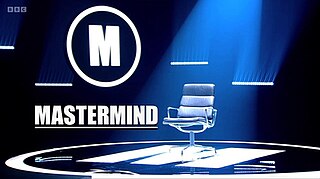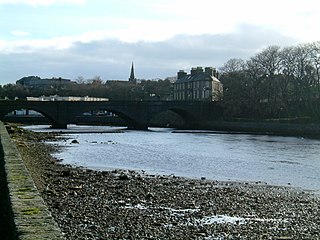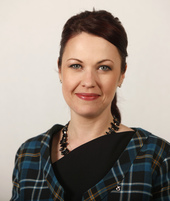Related Research Articles

Printmaking is the process of creating artworks by printing, normally on paper, but also on fabric, wood, metal, and other surfaces. "Traditional printmaking" normally covers only the process of creating prints using a hand processed technique, rather than a photographic reproduction of a visual artwork which would be printed using an electronic machine ; however, there is some cross-over between traditional and digital printmaking, including risograph. Except in the case of monotyping, all printmaking processes have the capacity to produce identical multiples of the same artwork, which is called a print. Each print produced is considered an "original" work of art, and is correctly referred to as an "impression", not a "copy". However, impressions can vary considerably, whether intentionally or not. Master printmakers are technicians who are capable of printing identical "impressions" by hand. Historically, many printed images were created as a preparatory study, such as a drawing. A print that copies another work of art, especially a painting, is known as a "reproductive print".

Engraving is the practice of incising a design onto a hard, usually flat surface by cutting grooves into it with a burin. The result may be a decorated object in itself, as when silver, gold, steel, or glass are engraved, or may provide an intaglio printing plate, of copper or another metal, for printing images on paper as prints or illustrations; these images are also called "engravings". Engraving is one of the oldest and most important techniques in printmaking. Wood engraving is a form of relief printing and is not covered in this article.

Mastermind is a British television quiz show for the BBC, currently presented by Clive Myrie. Its creator, Bill Wright, drew inspiration from his experiences of being interrogated by the Gestapo during World War II. The show features an intimidating setting and challenging questions. Four contestants face two rounds, one on a specialised subject of the contestant's choice, the other a general knowledge round.

John Buckland Wright (1897–1954) was a British printmaker, painter and draughtsman. He worked principally as an etcher and engraver, and was self-taught.

Wood engraving is a printmaking technique, in which an artist works an image or matrix of images into a block of wood. Functionally a variety of woodcut, it uses relief printing, where the artist applies ink to the face of the block and prints using relatively low pressure. By contrast, ordinary engraving, like etching, uses a metal plate for the matrix, and is printed by the intaglio method, where the ink fills the valleys, the removed areas. As a result, wood engravings deteriorate less quickly than copper-plate engravings, and have a distinctive white-on-black character.

Wick is a town and royal burgh in Caithness, in the far north of Scotland. The town straddles the River Wick and extends along both sides of Wick Bay. "Wick Locality" had a population of 6,954 at the time of the 2011 census, a decrease of 3.8% from 2001.

Line engraving is a term for engraved images printed on paper to be used as prints or illustrations. The term is mainly used in connection with 18th- or 19th-century commercial illustrations for magazines and books or reproductions of paintings. It is not a technical term in printmaking, and can cover a variety of techniques, giving similar results.

John Hutton was a New Zealand prominent glass engraving artist, who spent most of his career in the United Kingdom.

Edinburgh Crystal was a cut glass manufactured in Scotland between 1867 and 2006, and was also the name of the manufacturing company. In addition to drinking glasses, Edinburgh Crystal made decanters, bowls, baskets, and bells, in several ranges.

Engraved glass is a type of decorated glass that involves shallowly engraving the surface of a glass object, either by holding it against a rotating wheel, or manipulating a "diamond point" in the style of an engraving burin. It is a subgroup of glass art, which refers to all artistic glass, much of it made by "hot" techniques such as moulding and blowing melting glass, and with other "cold" techniques such as glass etching which uses acidic, caustic, or abrasive substances to achieve artistic effects, and cut glass, which is cut with an abrasive wheel, but more deeply than in engraved glass, where the engraving normally only cuts deeply enough into the surface to leave a mark. Usually the engraved surface is left "frosted" so a difference is visible, while in cut glass the cut surface is polished to restore transparency. Some pieces may combine two or more techniques.
William Ernest Stephen Turner was a British chemist and pioneer of scientific glass technology.

Thomas Goff Lupton was an English mezzotint engraver and artist, who engraved many works by J. M. W. Turner and other notable British painters of the 19th century. He also produced some pastels, exhibited at the Royal Academy. He played an important part in advancing the technical aspect of engraving by introducing soft steel plates.

Charles Theodosius Heath was a British engraver, currency and stamp printer, book publisher and illustrator.

Kenneth Steel was a British painter and engraver, noted for his works of art in watercolor. As an accomplished draughtsman his work is noted for its intricate detail, which can be best seen in his landscapes views and street scenes, many of which were reproduced as designs for railway carriage prints and station billboard posters.

Alison Kinnaird MBE, MA, FGE is a glass sculptor, Celtic musician, teacher and writer born in Edinburgh, Scotland. She is one of the foremost and most original modern glass engravers in Scotland.

Alison Cornwall Geissler MBE, née McDonald, was one of the foremost glass engravers in Scotland during the mid-twentieth century.

Graham Short, is a micro-artist, living and working in Birmingham, England.

Gail Elizabeth Ross is a former Scottish National Party (SNP) politician, who served as the Member of the Scottish Parliament (MSP) for Caithness, Sutherland and Ross from the election in May 2016 Up until 2021 when she decided to not seek re-election. She was a councillor on the Highland Council 2011–2016, and civic leader of Caithness 2012–2016.
Helen Monro Turner was a Scottish artist based in Edinburgh. She worked her whole life and pursued careers as a wood cut specialist, glass engraver, illustrator and educator. She helped open and establish the first glass engraving department at Edinburgh College of Art on 8 January 1941. The scale of her work ranged from a single glass or a tiny engraved crystal box to huge architectural commissions such as the windows on the staircase in the National Library of Scotland.
David Peace MBE FSA FGE was a British glass engraver and a town planner. Peace, along with William Wilson and Laurence Whistler are accredited as simultaneously reviving the craft of glass engraving during the 1930s. Several pieces of his work are situated in Westminster Abbey including an engraved glass screen at St George's Chapel.
References
- 1 2 3 4 5 6 7 8 9 10 11 "Mastermind: The man behind 50 years of glass trophies". BBC News. 21 September 2022. Retrieved 21 September 2022.
- 1 2 3 Hendry, Alan (18 September 2022). "PICTURES: Highland glass artist muses on 50 years of Mastermind designs". RossShire Journal. Retrieved 21 September 2022.
- 1 2 3 4 5 6 7 8 9 10 Hendry, Alan (17 September 2022). "Wick glass artist reflects on 50 years of Mastermind designs". JohnOGroat Journal. Retrieved 21 September 2022.
- 1 2 Parnell, Grace (25 August 2010). "Sheffield's glass wedding dress". BBC Sheffield & South Yorkshire. Retrieved 21 September 2022.
- ↑ Hendry, Alan (17 September 2022). "Glass artist Denis reflects on 50 years of Mastermind designs". Northern Times. Retrieved 21 September 2022.